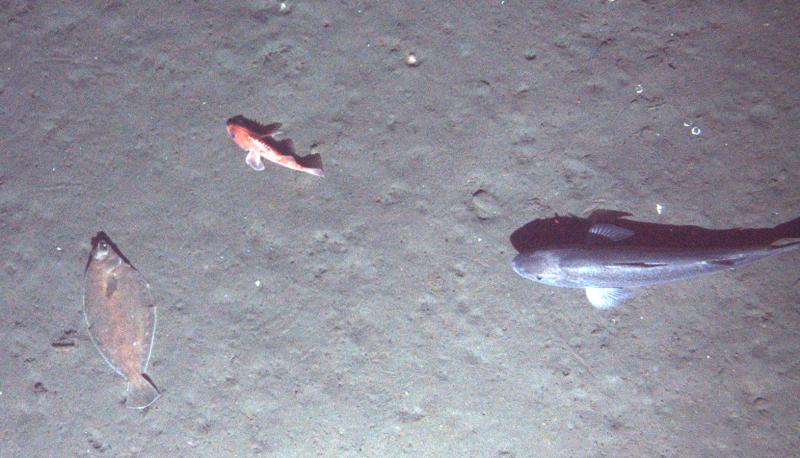Shifting ocean conditions associated with climate change will likely send high-value sablefish into deeper waters off the West Coast, new research shows. That could make the fish tougher to catch and force fishing crews to follow them or shift to other, more accessible species.
The research led by scientists at NOAA Fisheries’ Northwest Fisheries Science Center provides a glimpse of West Coast fisheries with climate change. Fishing crews must always balance the value of different commercial species against the distances involved in catching them, but climate change could alter that equation in new ways.
Scientists studied how four species of West Coast groundfish commonly caught together may respond to climate change. The four species accounted for 53 percent of bottom-trawl groundfish revenue off the Pacific Coast over the last decade. They include sablefish, the most valuable groundfish species, as well as Dover sole; shortspine thornyhead; and longspine thornyhead.
“Together, these are a large proportion of the groundfish caught off the West Coast, so they provide some indication of how things may change and the choices those changes present for the fishing community,” said Owen Liu, a research scientist at the Northwest Fisheries Science Center in Seattle. “This may not be good news for the fisheries, but it hopefully provides some foresight into how distributions may shift and gives fisheries and managers time to consider how to adapt to these changes.”
The research published in Science Advances can help the commercial fishing fleet and fisheries managers prepare for changes climate change may bring to the ecosystem, researchers said. Climate models predict warming temperatures and declining oxygen levels in waters off the West Coast, which is dominated by the California Current. Temperatures and oxygen levels are known to affect the distribution of fish species.
Offshore Shift Goes Deep
The forecasts anticipate declines in the abundance of sablefish and shortspine thornyhead and increases in longspine thornyhead, with mixed forecasts of the abundance of Dover sole. All the species except longspine thornyhead are expected to move farther offshore into deeper waters. The steep offshore drop beyond the continental shelf, which on the West Coast is 20 or more miles offshore, can lead to substantial increases in depth for groundfish species that inhabit the sea floor.
As the species shift farther offshore, the increased depths and distances mean that fishing vessels must travel farther to reach their target species. They may also find that standard bottom trawl gear becomes less efficient at catching fish at such depths. Greater proportions of sablefish and shortspine thornyhead may also descend below 700 fathoms, depths where the groundfish management plan that governs fishing off the West Coast currently prohibits fishing.
The findings also highlight the challenge fisheries managers may face in keeping fishing sustainable even as conditions change and species move. That may mean rethinking regulations so fishing can continue while protecting enough fish and habitat so species can maintain themselves long-term.
“If a significant proportion of target species moves deeper, as our results suggest for some species, there may be an incentive for industry and management to overcome technical and policy challenges to enable fishing at greater depths to follow target species to their new habitats,” the researchers concluded.
Fleet Faces Fishing Choices
The fishing fleet may also choose to pursue different species at more accessible depths, which some are already doing. Fishing vessels have followed market squid north along the West Coast as ocean conditions have shifted the distribution of the species. Market squid support one of the highest-value fisheries on the West Coast, with much of the catch exported to markets in Asia.
The development of offshore wind turbines on the West Coast may also affect access to some ocean areas. “Our results suggest that projections of species’ future distributions will be important in the decision-making process for where these new sectors are permitted and sited to minimize future conflict across ocean-use sectors and the conservation and management of fisheries species,” the scientists wrote.
“Climate change will alter where species can be caught efficiently, in ways that may challenge fishing communities that have grown accustomed to using particular fishing grounds,” said Jameal Samhouri, a research scientist at the Northwest Fisheries Science Center and coauthor of the research. “This is a look at how that might play out.”



